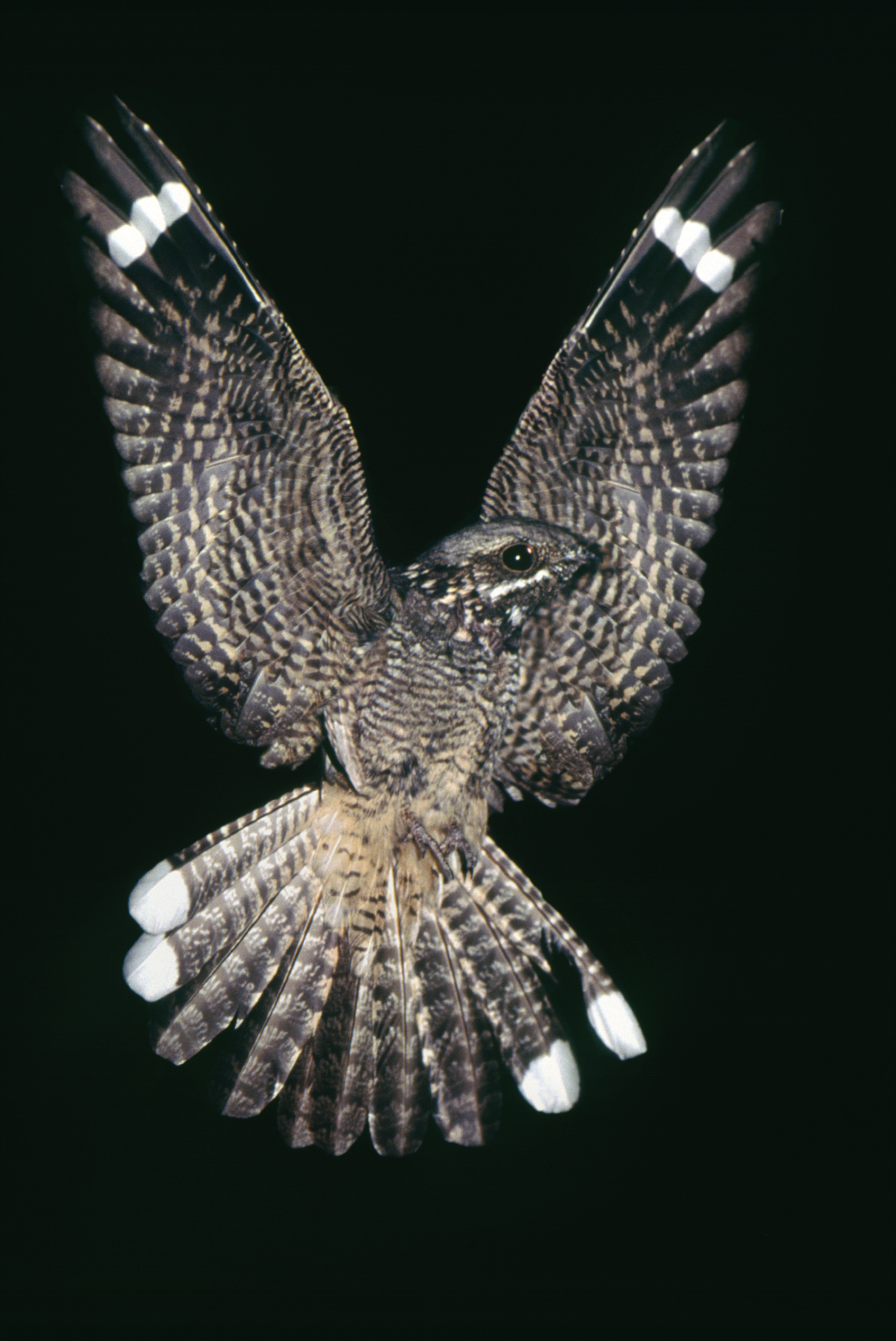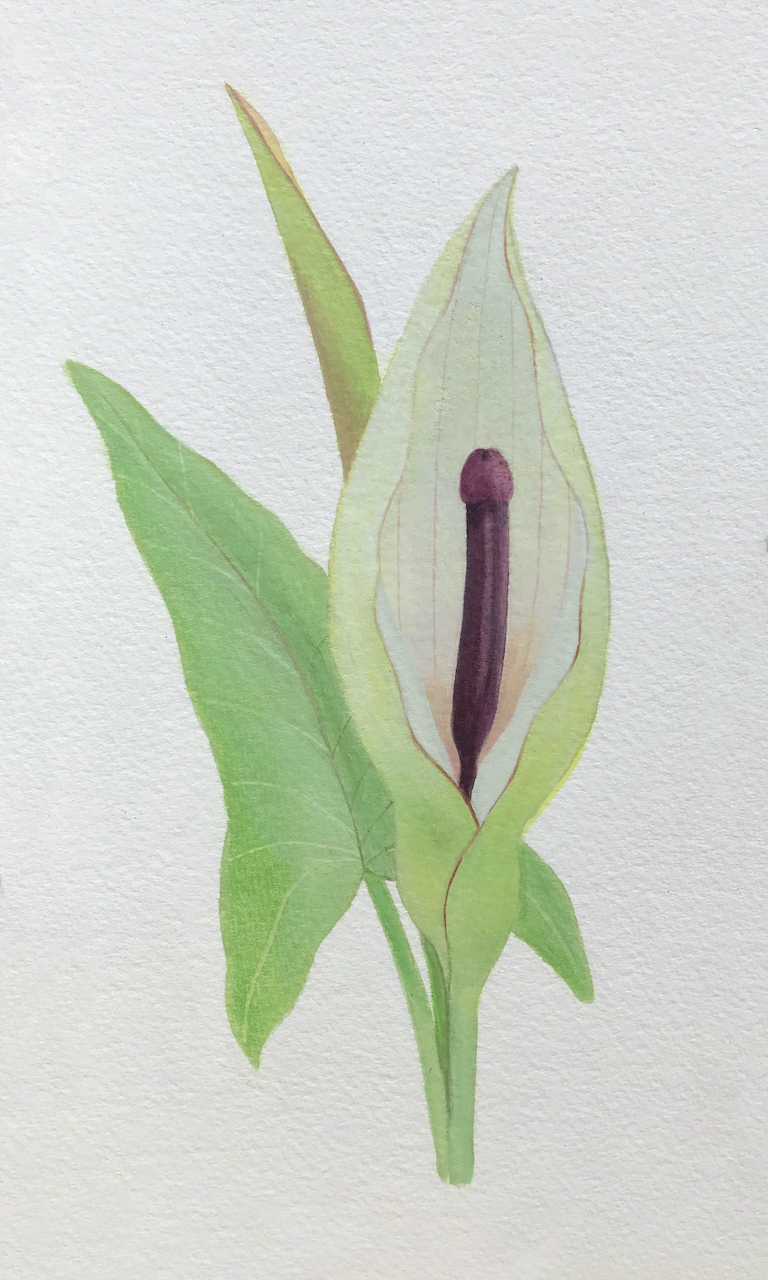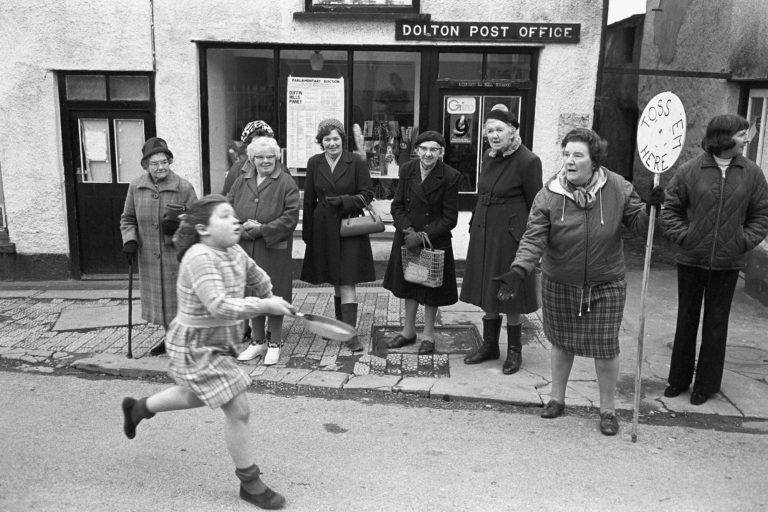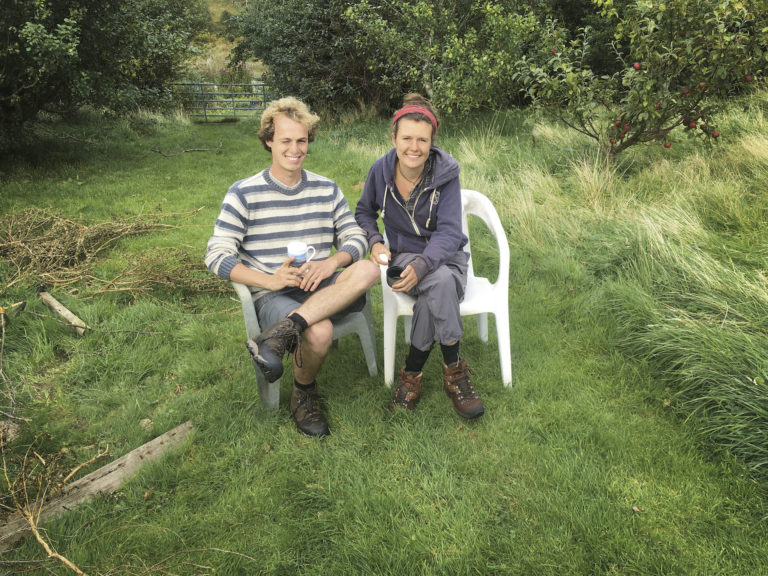BIRDS I The Nightjar. The Hurtwood, Peaslake, Surrey, England
Is this the oddest bird in the UK?
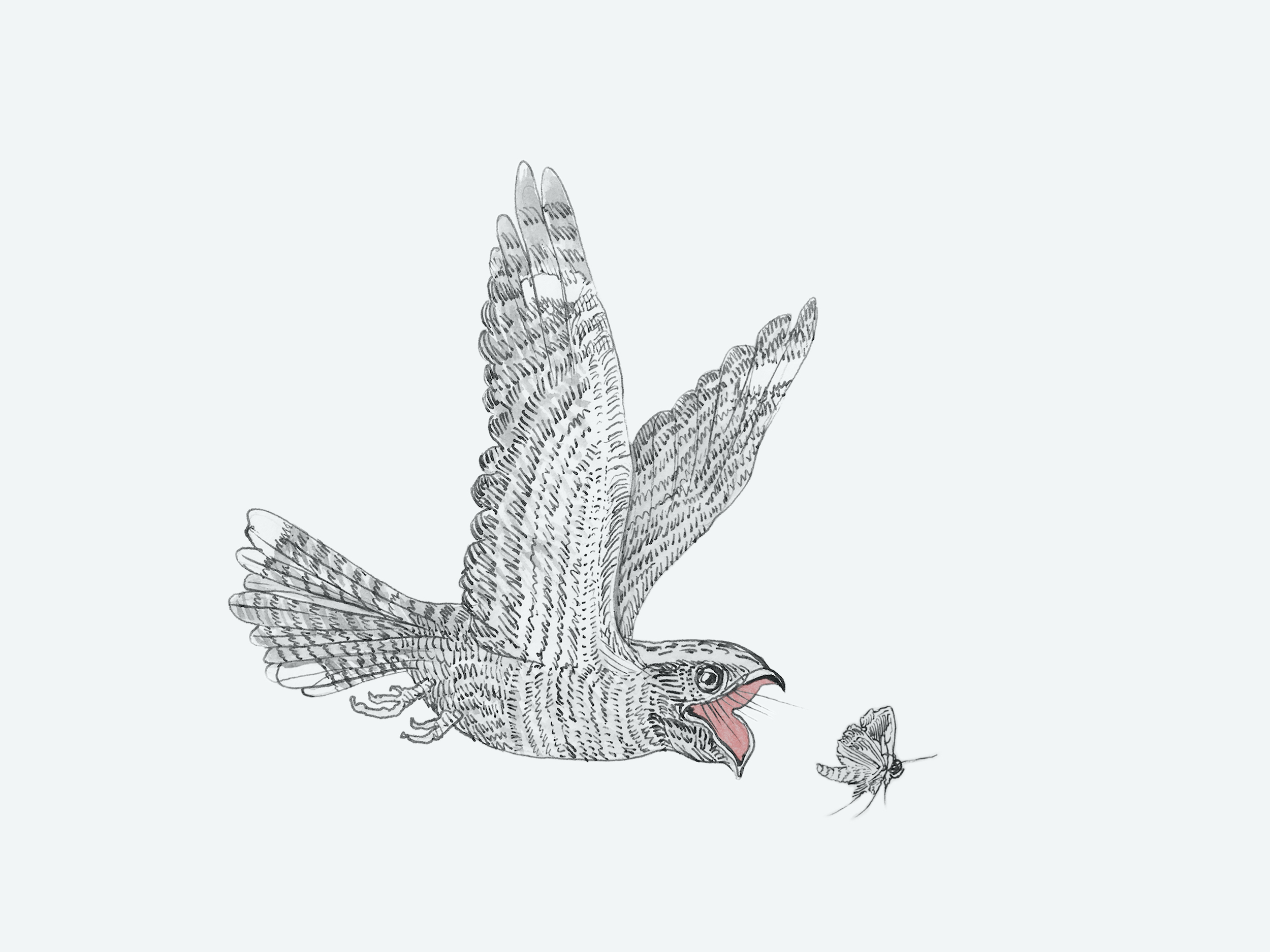
Rachel Thorlby
The Nightjar is Britain’s oddest bird. For starters, it’s largely crepuscular (borderline nocturnal) so it has two huge eyes, coupled with a Harriet Harman like profile. She isn’t largely crepuscular I imagine. Anyway, it also has a monstrously sized mouth surrounded by whiskers, the better to catch the moths and other insects that it feeds off.
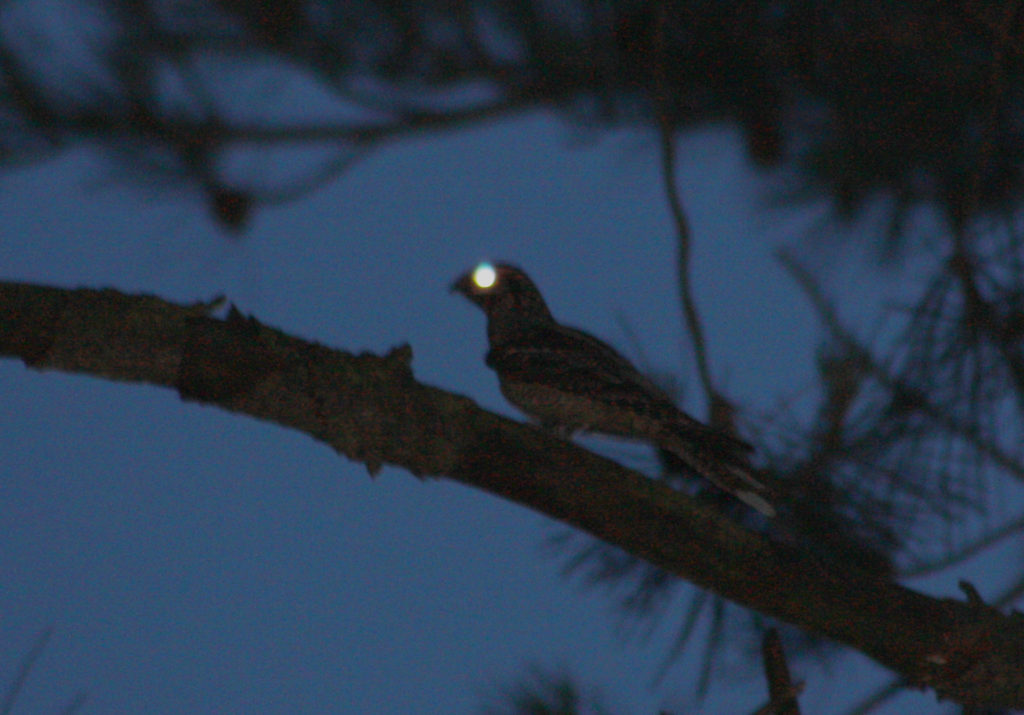
Sébastian Bertru
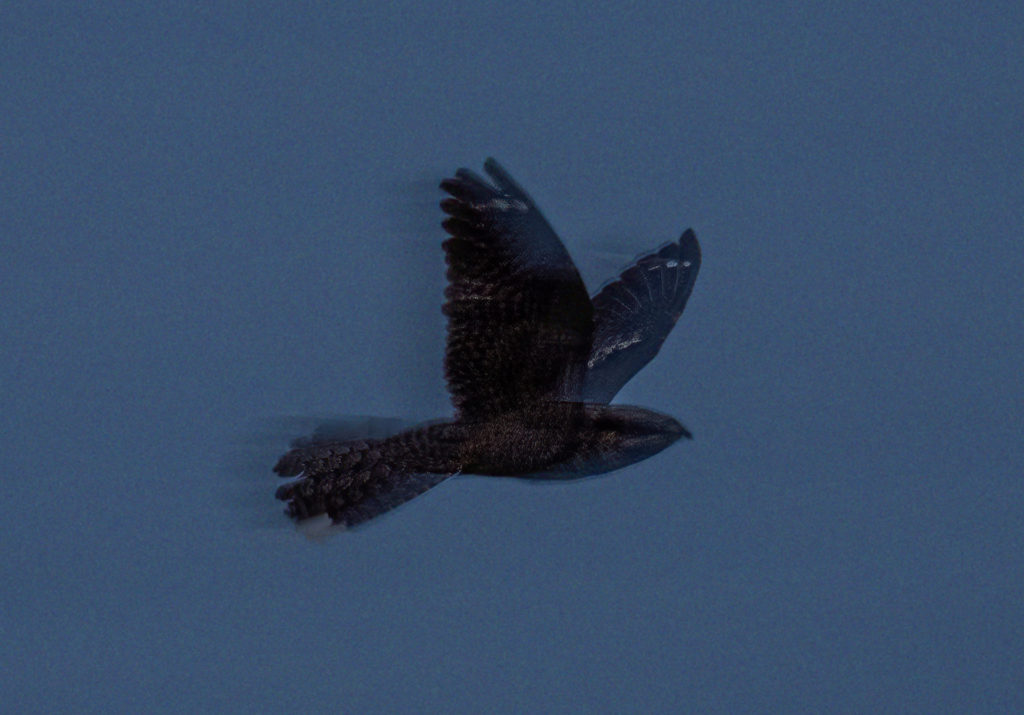
Jan R. Ubels
It winters in the Democratic Republic of Congo but visits our shores for a couple of weeks between April and September to nest in an unlined scrape on the ground, normally among conifers on heathland. After flying all that way ground nesting seems like a crazy dangerous idea for a bird but the word on the street is that nightjars sometimes carry their young in their mouths in the event of attack. This is unconfirmed. In fact a lot about nightjars is unconfirmed or at least shrouded in myth. They are particularly secretive which, combined with their nocturnal habit, means they have often aroused suspicion as well as fascination. Unbaptised children were said to wander the dark hours in the form of a nightjar until judgement day arrived and presumably then life either got better or worse. They were also suspected to be goatsuckers. Yep goatsuckers. Not too heinous a crime perhaps but once they had suckled, the goat was said to be left with sour milk and blindness. Not nice.
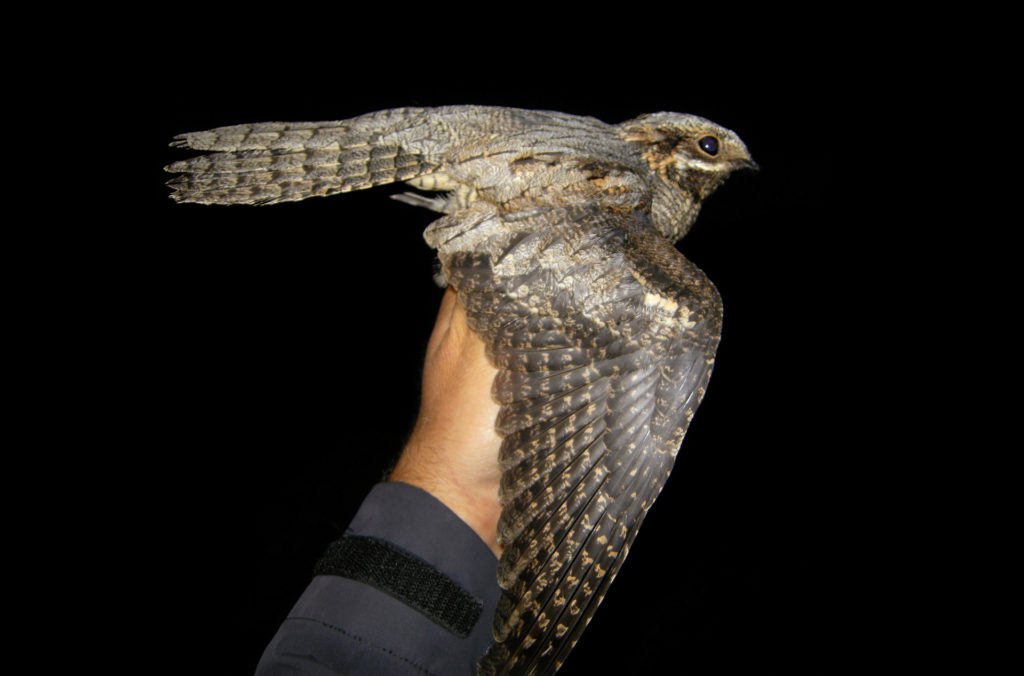
Atlee Grimsby
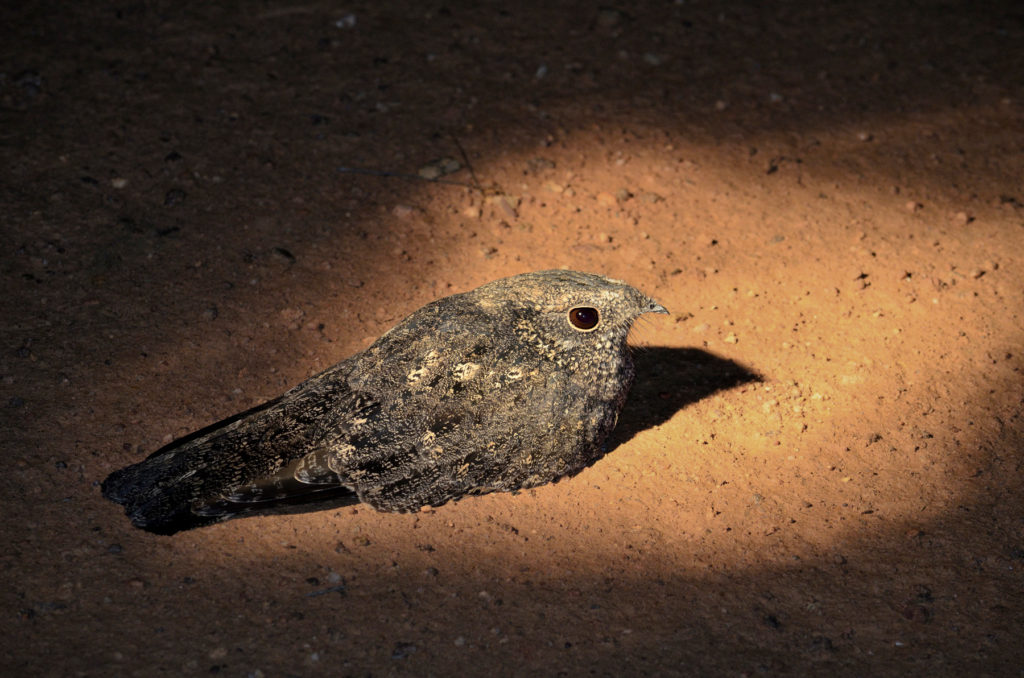
Sumarie Slabber
It’s weirdest traits though are the sounds it makes. Confirmed. The Coracle had the good fortune to see these rare birds in the Surrey woodlands one evening last year with nature nut Jeff Colombé, who sometimes strings up his hammock to spend the night being lulled to sleep by their calls. It’s more techno than lullaby though. The males make a churring noise with 1900 beats per minute, the sound fluctuating as they turn their head from side to side. Think old skool dial up internet connection. This incessant burbling abruptly stops when suddenly they take flight, swooping and flapping just above your head. Whilst in flight and on the pull, the male’s wings hand clap together above their backs and then below whilst emitting a liquidy ‘quip quip’. The sound is delightfully slow paced, more like a chill out track. Because of all this oddness, it’s a magical experience to hear them and a twitcher’s treat to see them. In the gloaming, they could have flown straight from the pages of a children’s picture book. In our somewhat busy lives, being forced to stop, wait and listen is itself a magical experience.
Jeff’s top tip: closing your eyes whilst cupping your ears dramatically enhances your sense of hearing – which of course explains the genius behind so many of our fellow creatures’ larger ears.
